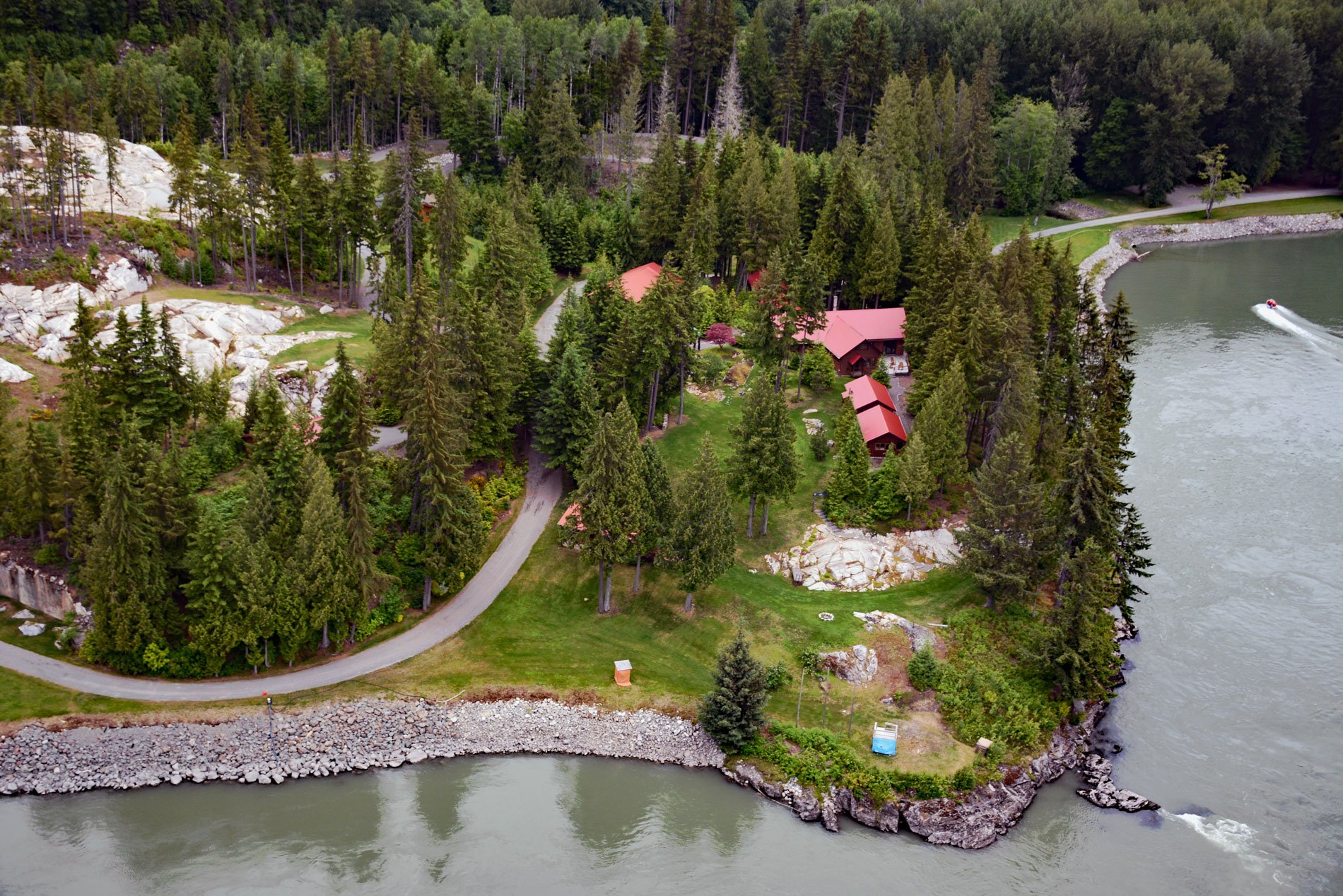Graveyard Point is a historical steamboat landing and telegraph station near the confluence of the Shames River and the Skeena River, about 58 miles (94 km) east of Prince Rupert and 14 miles (23 km) southwest of Terrace, British Columbia. The point is a natural terrace on the north bank or right bank of the Skeena and historically was the site of a Tsimshian First Nations village, and the name is likely derived from a burial site or graveyard associated with the settlement. The Tsimshian buried their deceased in bent wood cedar boxes that were placed behind homes in their villages. The boxes were often weighted with stacks of large rocks or placed in shelters of split cedar planks. Over time, these burial boxes collapsed and were covered by refuse from the houses. Today, the point is occupied by sport fishing lodges.
Sternwheel steamboats ran the river between Hazelton and Prince Rupert from 1864 to 1912. The first sternwheeler arrived on the Skeena River from Victoria with 4 four passengers and 20 tons of freight, and soon at least 16 steamboats plied the river. The sternwheelers stopped overnight at Graveyard Point and were tied up with steel cables against the riverbank. For the steamboat captains, the many shoals and rapids made the Skeena one of the most difficult rivers to navigate and there was no running of the river during the night. On Friday, Sept 13, 1907, the sternwheeler SS Northwest wrecked between Graveyard Point and Telegraph Point. The ship went aground on a sandbar when the river level dropped, and the weight of the cargo broke the keel.
Dominion Government Telegraph began work in 1897 on a British Columbia provincial telegraph system. They started by resurrecting the old Collins Overland Telegraph line out of Quesnel and then building branch lines including the Skeena River Line in 1901-1902. The Skeena River Line operated along 203 miles (327 km) of the river between Prince Rupert and Hazelton. The company also built telegraph stations every 30 or 40 miles (48-65 km), including at Graveyard Point, which were manned by a telegraph operator and a lineman. The lineman would patrol the line on either side of the station, repairing it after windstorms and heavy snowfalls. Read more here and here. Explore more of Graveyard Point and the Skeena River here:

